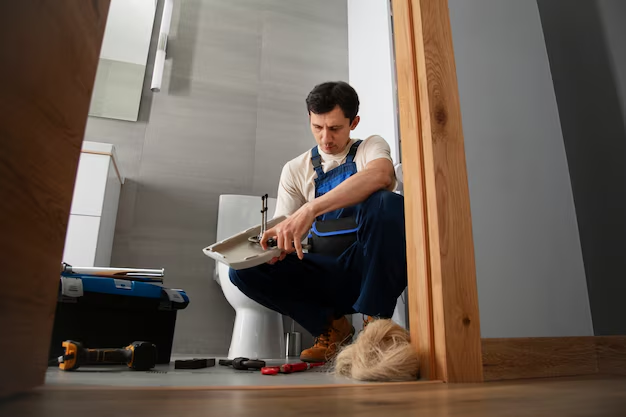A Step-by-Step Guide to Adding a Water Line to Your Refrigerator
Imagine enjoying a refreshing glass of ice-cold water straight from your refrigerator, without the fuss of constant refilling. Adding a water line to your fridge turns this dream into reality, delivering convenience and hydration at the push of a button. Whether you're installing a new fridge with a water dispenser or finally tackling that DIY project, this comprehensive guide will walk you through the process.
Why Add a Water Line to Your Refrigerator?
Convenience and Efficiency: A water line means no more refilling trays and pitchers. Enjoy refreshing drinks straight from the fridge, saving time and effort.
Filtered Water: Most modern refrigerators come with filtration systems, ensuring you and your family have access to clean and safe drinking water.
Enhanced Property Value: An upgraded kitchen feature like this can add to the appeal of your home, should you decide to sell or rent.
Getting Started: Tools and Materials You'll Need
Before jumping in, it's essential to gather some basic tools and materials. Here’s what you’ll need:
- Flexible water line tubing: Copper or plastic (often polyethylene).
- Water line installation kit: Includes connectors and valves.
- Adjustable wrenches and pliers: For tightening and securing nuts.
- Drill: For making necessary holes.
- Pipe seal tape: To ensure leak-proof connections.
- Bucket and towels: For possible spills during installation.
Step-by-Step Guide to Installing a Water Line
Step 1: Plan Your Route
Assess the Distance: Measure the path from your kitchen plumbing to the fridge. This will determine the length of tubing required. Choose the shortest, most direct route.
Check Accessibility: Ensure that existing plumbing is easily accessible and that your chosen route avoids obstacles, like electrical wiring or gas lines.
Step 2: Shut Off the Water Supply
Find and Close the Valve: The water supply valve is often under the sink or in the basement. Turning it off will prevent water spillage during installation.
Step 3: Drill a Hole, If Necessary
Position Wisely: If your route requires drilling through cabinets or walls, choose a discreet and practical location.
Safety First: Always check what's behind the surface to prevent drilling into electrical or other plumbing lines.
Step 4: Attach the Water Line to the Refrigerator
Connect the Tubing: Securely attach one end of the tubing to the refrigerator’s water inlet valve. Most fridges have clear indicators or instructions for this connection, usually located at the back.
Use Pipe Seal Tape: Wrap the threads with tape to prevent leaks.
Step 5: Connect to the Main Water Supply
Locate the Cold Water Line: Typically found under the sink or at your basement ceiling.
Install the Saddle Valve: A saddle valve can tap into the existing cold water line without cutting. Position it correctly and tighten the clamp.
Connect the Other End of the Tubing: Attach the tubing to the saddle valve, ensuring a tight fit with your wrench.
Step 6: Test Your Setup
Turn the Water Supply Back On: Open the supply valve.
Check for Leaks: Run water through the fridge dispenser. Observe all connections for leaks, tightening any loose connections as needed.
Flush the System: Let the water run for a few minutes to clear air and any initial impurities from the line.
Assessing Materials: Copper vs. Plastic Tubing
Copper Tubing:
- Durability: Resistant to physical damage and temperature changes.
- Cost: Typically more expensive.
- Installation: Requires careful bending and cutting for a precise fit.
Plastic Tubing:
- Flexibility: Easier to maneuver around objects.
- Affordability: Generally cheaper than copper.
- Suitability: Well-suited for DIY setups.
Common Issues and Troubleshooting
Low Water Flow
- Check the Valve: Ensure the saddle valve is fully open.
- Line Blockages: Detach and check the tubing for kinks or debris.
- Filter Issues: Replace old filters, which may be reducing pressure.
Leaks
- Connections: Ensure all nuts are tightly secured and use sealing tape appropriately.
- Valve or Tubing Defects: Assess for any damage and replace if necessary.
Safety Tips and Precautions
Avoid Electric Hazards: Always be aware of electrical lines when drilling and ensure the fridge is unplugged during installation.
Wear Protective Gear: Use safety goggles and gloves where necessary, particularly when drilling.
Check Local Regulations: Some areas have specific codes related to plumbing installations. Ensure your project complies with local standards.
Summary Tips for Success
🌟 Quick Tips for a Smooth Installation
- 🛠️ Gather All Tools and Materials First: Preparation prevents mid-project interruptions.
- 🔍 Check Compatibility: Ensure your tubing and valve sizes match your fridge and water supply.
- 🚰 Test the Water System: Before finalizing, make sure everything is running smoothly.
- 🔄 Regular Maintenance: Replace filters and check connections periodically to ensure optimal function.
Adding a water line to your refrigerator is a manageable task that enhances the daily convenience of your kitchen. By following these steps carefully and using this guide as a reference, you’ll be enjoying crisp, cold water and ice in no time. Happy DIY-ing!
